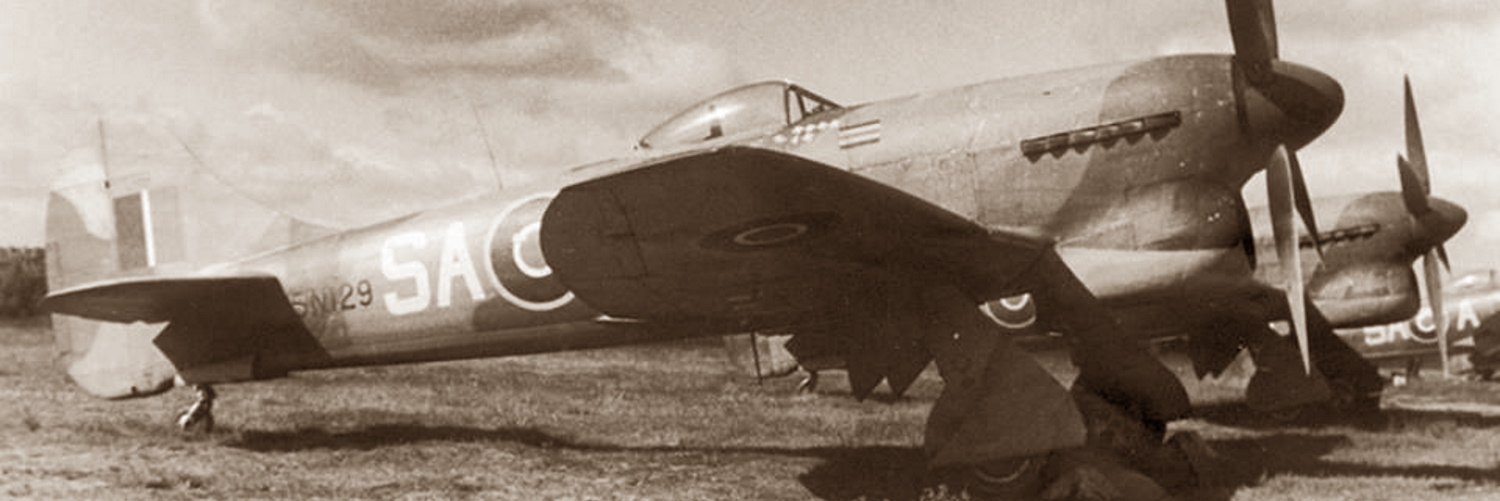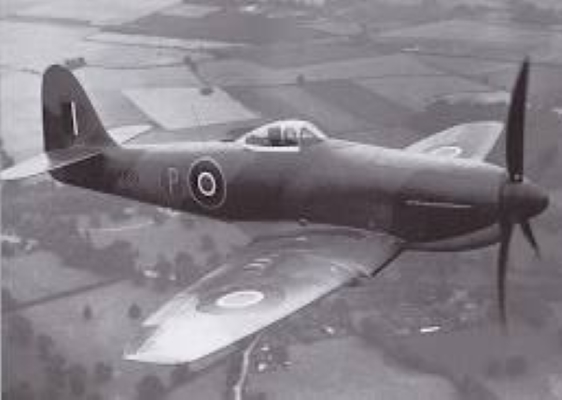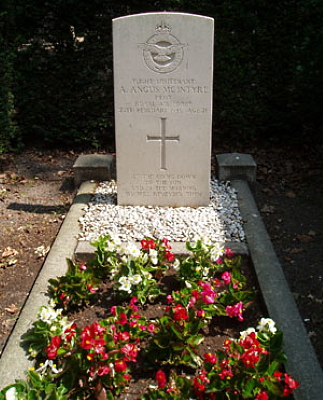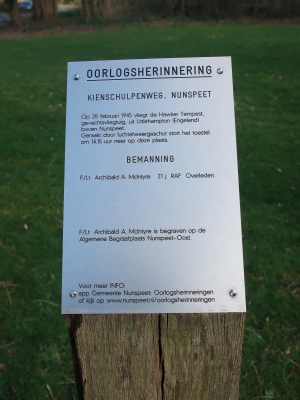Busy day in the air
On Wednesday afternoon, February 28, 1945 at a quarter past two in the afternoon, an English fighter crashed in a field on the Kienschulpenweg. That field is no longer there. There are now houses, seen from the post on the other side of the road. In a diary that Nunspeter Kees van der Hoef kept at the time, he wrote: “Defense in action. An airplane landed on the 2nd Zoom. 1 dead.” It was busy in the air that day. 873 RAF fighters and fighter-bombers carried out armed reconnaissance. Many railway lines, locomotives and trucks were destroyed. Eleven airplanes did not return. Three Tempests were lost: McIntyre’s plane and two other planes that landed in Germany. The commander of the Nunspeet police, chief sergeant Karst Doeven, noted in the report: “The plane burned out completely. The pilot was killed as a result of the fall and was lying next to the plane. In my opinion, the plane was hit by the anti-aircraft guns in Nunspeet. Apart from the death of the pilot, no personal injuries occurred. There was no damage to nearby houses.”
Potatoes had to be planted
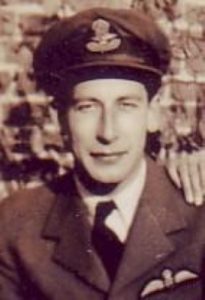 The pilot was Flight Lieutenant Archibald Angus McIntyre. A red rubber tag read C.E. 123214R.A. F. (V.R.). He had nine passport photos and a photo of a girl with him. The photos were partially burnt and were sent to the Red Cross on 9 March 1945. McIntyre was buried in Nunspeet on Saturday 3 March 1945, as the last in the row of English graves that can still be seen today.
The pilot was Flight Lieutenant Archibald Angus McIntyre. A red rubber tag read C.E. 123214R.A. F. (V.R.). He had nine passport photos and a photo of a girl with him. The photos were partially burnt and were sent to the Red Cross on 9 March 1945. McIntyre was buried in Nunspeet on Saturday 3 March 1945, as the last in the row of English graves that can still be seen today.
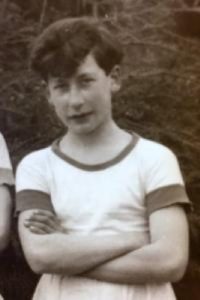 McIntyre was 22 years old, born on 27 October 1922 in Quetta in India and a son of Archibald Norman and Stella Mary McIntyre from Littlehampton in Sussex. As a pilot he took part in operations against Japan from Australia. In 1943 he returned to England and flew missions in France. On 18 November 1944 he became a Flight Lieutenant. The aircraft with which F/Lt McIntyre crashed on the Kienschulpenweg was a Hawker Tempest Mk V with the code NV680 ZD- . It belonged to the 222 Squadron, which had Gilze-Rijen as its base and was part of the 2nd Tactical Air Force. The Tempest was the fastest fighter of the English air defence. The aircraft had been in use by the Royal Air Force since April 1944. The remains of McIntyre’s aircraft were left on the field of Albert Pater on the Kienschulpenweg. It attracted a lot of attention. But the farmer wasn’t too happy about it. He wanted to plant potatoes. The plane had to go. If necessary, he was willing to help with a horse and cart. The mayor wrote a letter in German to the Ortskommandantur in Harderwijk: “I would be happy if you could follow the prayer of Father Albert. The food economy of my community would be helped by ebenfalls.” Source: o.a. Elspeet Historie
McIntyre was 22 years old, born on 27 October 1922 in Quetta in India and a son of Archibald Norman and Stella Mary McIntyre from Littlehampton in Sussex. As a pilot he took part in operations against Japan from Australia. In 1943 he returned to England and flew missions in France. On 18 November 1944 he became a Flight Lieutenant. The aircraft with which F/Lt McIntyre crashed on the Kienschulpenweg was a Hawker Tempest Mk V with the code NV680 ZD- . It belonged to the 222 Squadron, which had Gilze-Rijen as its base and was part of the 2nd Tactical Air Force. The Tempest was the fastest fighter of the English air defence. The aircraft had been in use by the Royal Air Force since April 1944. The remains of McIntyre’s aircraft were left on the field of Albert Pater on the Kienschulpenweg. It attracted a lot of attention. But the farmer wasn’t too happy about it. He wanted to plant potatoes. The plane had to go. If necessary, he was willing to help with a horse and cart. The mayor wrote a letter in German to the Ortskommandantur in Harderwijk: “I would be happy if you could follow the prayer of Father Albert. The food economy of my community would be helped by ebenfalls.” Source: o.a. Elspeet Historie

